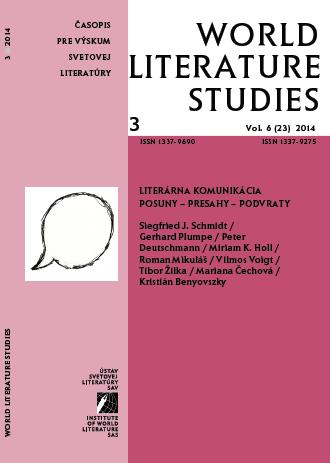Rhizomatic Character of Transcultural and Transtemporal Mode of Literary Communication
Rhizomatic Character of Transcultural and Transtemporal Mode of Literary Communication
Author(s): Mariana ČechováSubject(s): Literary Texts
Published by: Ústav svetovej literatúry, Slovenská akadémia vied
Keywords: Literary Communication; Rhizome and network Arrangement; Classic Folk Tale
Summary/Abstract: A study without the questioning of the abstract model validity of the traditional linear concepts of literary communication pointing to cases of literary communication with an essence that is not linear but rhizomatic. The material basis of the interpretation as variations of fairy-tale of 510 A type of “Persecuted Heroine” (Aarne-Thompson-Uther). The category of the author and production in case of the 510 A type dos not represent a “one-point” homogeneous systemic element, but a diversified network of “genetic focuses”. These are distributed in a transtemporal manner, and at the same time, they show transcultural diffusion. And at the same time, some focuses are factually (textually) verifiable (Chengshi Yexian, G. Basile La Gatta Cenerentola and others), and others constructed purely hypothetically (H. Bayley, R. D. Jameson). The central category of text as well as its reception is also characterized by analogical parameters (this applies to rhizomatic network of variations). This study of the mentioned material basis shows that literary communication in its traditional form already has a polydimensional multi-level nature based on binary principles: factual – hypothetic; definite – indefinite; delimited – confluent, derived – autonomous, diffused – parallel, convergent – divergent etc.
Journal: World Literature Studies
- Issue Year: VI/2014
- Issue No: 3
- Page Range: 111-127
- Page Count: 17
- Language: English

